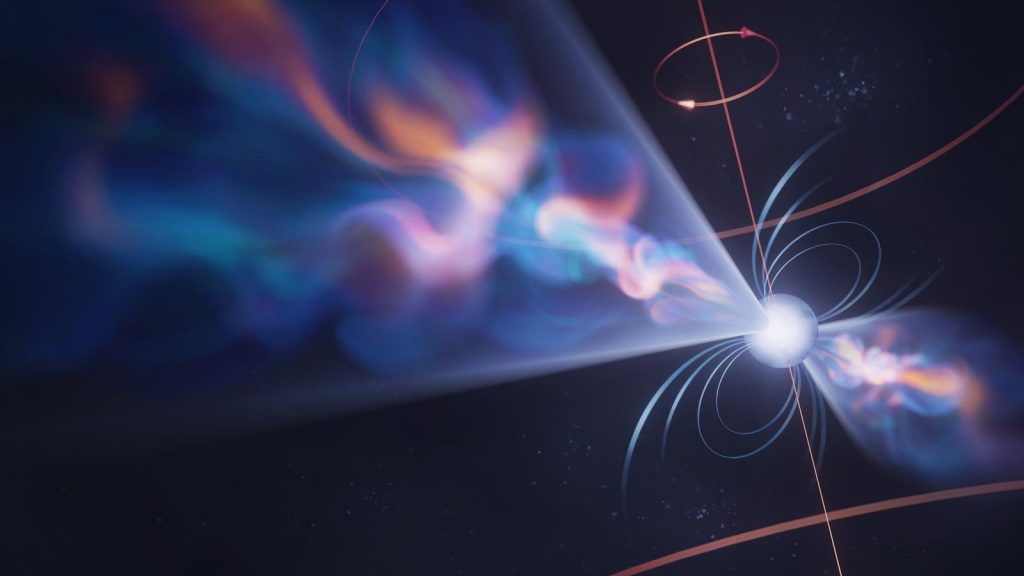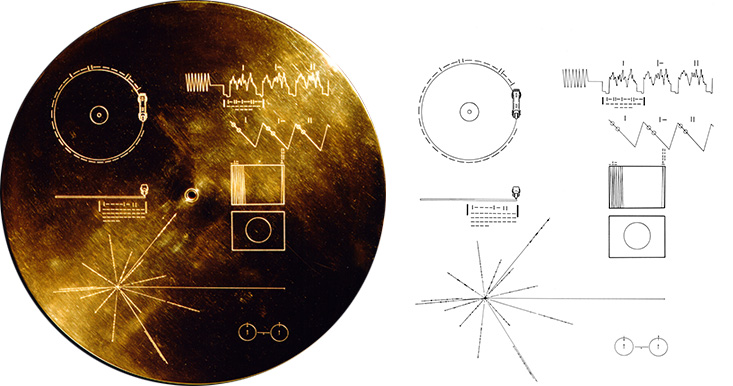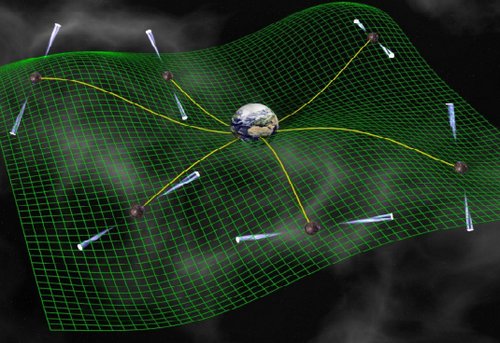Heading into the holiday weekend, social media exploded with news that a massive discovery was going to be announced on Thursday June 29 by the NANOgrav collaboration. This network of North American observatories had been watching the sky in radio light for over 15 years and now they had something big to share.
For those who’d been following the team’s work, hopes were high. This team had been carefully monitoring the metronome-like ticking of radio pulsars to see if they could see alterations in the fabric of space-time that are caused by gravitational waves. That big news — we hoped — would be a description of our universe warping in observable ways.
Funded by the National Science Foundation in 2015, NANOGrav used the Arecibo and Greenbank radio dishes, as well as the CHIME and Very Large Array to monitor an ever increasing number of pulsars.
These spinning neutron stars blast our radio light like an over-caffeinated lighthouse spinning 1000 times a second. Neutron stars are the high-density remnants of massive stars that can no longer fuel nuclear reactions. Neutron stars are just what their name implies: giant balls of neutrons. Because these particles can get much closer together than a mix of protons and electrons, neutron stars can cram all their mass into a volume that could rest comfortably on Manhattan Island. That mass — it is 1.4 solar masses to something like 2.2 solar masses.

When that much mass crams into a space that small and spins extremely rapidly, that you end up with a nature-made top that doesn’t have a single wibble or wobble to its motion. A stand-alone pulsar is the ultimate clock, and when we find pulsars paired up in binary systems, their obits can be precisely measured by the shifting of their pulses.
Essentially, as the pulsar moves toward us in its orbit, each pulse has to travel a little less distance than the one before, so the ticking of the clock seems to speed up. As the pulsar moves away from us, each tick has to travel a little bit farther, and the beating seems to slow down.
This kind of timing measurement is so accurate that the first planet ever discovered was found in 1992 orbiting a pulsar that it ever so slightly moved to and fro in a detectable way.
Their precision rotation makes pulsars true beacons in the sky, and many sci fi series have used them as navigational plot points. The gold plate on the Voyager missions even included a map indicating where our solar system is located relative to a series of pulsars.

And if our universe is made of stretchy spacetime that can expand and contract, as Einstein predicted, these beacons should move with the space and that motion should show up as tiny timing variations in the pulses.
According to Einstein, this kind of stretching of space can occur when massive objects combine and send gravitational waves rippling through the universe.
If a lonely pulsar, with no planets or stellar companions, appears to move ever so slightly to and fro, we might be seeing space getting smaller and larger in response to a gravitational wave while the pulsar stays put on the fabric of space-time.
Measuring changes in the ticking beat of a millisecond pulsar is not exactly easy, and if researchers only see one pulsar seem to change just once, there is no way to know if the measured time is wrong or space is stretching. This is why researchers monitored as many pulsars as they could.
As a wave moves through space, we should be able to see pulsars in different places get affected at different times. Pulses in line with the moving wave will appear to change in one way while those off to the side will appear to change in a different way.

When this project was funded, ground-based gravitational wave detectors still hadn’t found anything, and many folks — myself included — were starting to think that we’d never be able to detect tiny variations in space time effecting our planet. Systems like LIGO and Virgo are sensitive to everything from seismic noise to passing trucks. While pulsars wouldn’t allow us to see the small gravitational waves that LIGO and Virgo might detect, they would let us potentially see the massive waves from merging supermassive black holes and other giant systems.
So… in 2007 NANOgrav started.
And 2015, with funding from NSF, researchers built a Physics Frontiers Center out of NANOgrav.
In 2016, LIGO and Virgo would announce their first detection of the merger of two stellar mass black holes.
And the folks at NANOgrav would keep monitoring.
And keep monitoring…
And we would get hints in papers and conference presentations that fluctuations were being seen, that the data was sensitive enough for the experiment to work, and that someday we’d have a new way to see our universe.
And… on June 23, in a series of papers, NANOgrav released their data and said (in fancier words) “Look, the signal is here… we can see the fabric of space being wibbly wobbly through the tiny timey wimey changes in pulsar ticks.”
The central result, highlighted in a special issue of the Astrophysical Journal Letters, is the correlation in timing variations measured in 68 pulsars with 3 or more years of data. Looking at 2,211 distinct pairs of events, they are able to replicate within error the expected signal of supermassive black holes merging and rippling our universe with their gravitational waves.
The signal is clear, but the data is still noisy and doesn’t yet allow researchers to say — “This timing event is related to something that happened in that exact direction”. We can’t yet see a gravitational wave signal and then point a telescope to see what happened.
Not yet.
But now this is a technological problem.
And it isn’t a problem that only NANOGrav is working to solve. Other collaborations around the world also raised their hands and said, we saw this too. From OzGrav using Parkes Radio telescope in Australia, to the Chinese Pulsar Timing Array on FAST to myriad other teams, this result is being seen to varying levels of accuracy by researchers around the world, and with NANOGrav’s data release, we can look forward to seeing more teams release their data and, with their combined results, get a better and better understanding of what is going on.
Until one day, we can see the gravitational waves and point our telescopes and say “Yes, I see the source.”
More than 400 years ago, Galileo pointed a handmade telescope at the stars, the Moon and the known planets. When he made his observations, many saw our world as perhaps the center of a universe with 5 planets, a Moon, the Sun, and a sphere of stars. There were some who granted that maybe the Sun could be the center, but … we really had no idea of the vastness of our Universe
In 400 years, our study of the Universe using light has allowed us to piece together a detailed understanding of how our universe expanded out into what we see today, how stars form and how planets come to be. We know that we are star dust, and we know that there is a lot that we don’t know because light only allows us to see so much, and all events from moment 0 to 400,000 years after the universe formed are hidden behind the cosmic microwave background light.
And I kind of feel like on that future day, folks will look back on 2015 and the start of NANOgrav, on 2016 and LIGO and Virgos first detection, and on 2023 and these results and say, “And this is where it started. Not with one man with one handmade device like Galileo… but with massive collaborations of humans working together to push technology for one simple reasons: to see what science can be seen.”



Pamela I enjoyed reading your article. I love your writing style and I would please ask you to share more science related articles with the rest of us. percentagecalculator.org